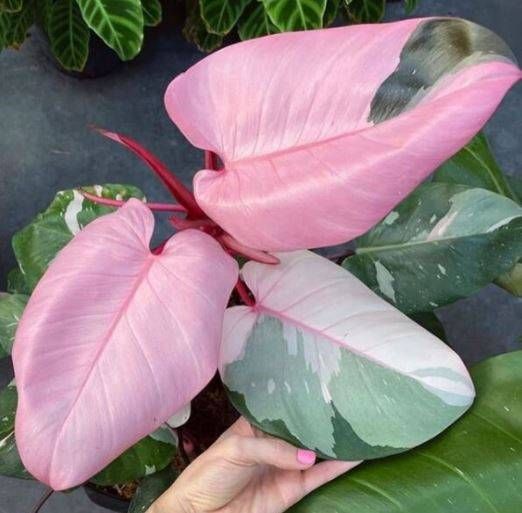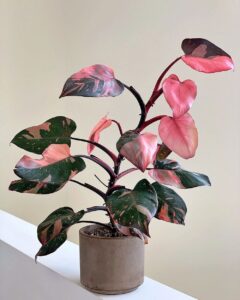
Understanding Your Pink Princess Plant
Before we dive into care tips, let's talk a little bit about the Pink Princess plant. The Pink Princess (botanical name: Philodendron erubescens) is a member of the Araceae family and is native to South America. It's an evergreen plant that can grow up to 3 feet tall and 3 feet wide. The leaves are variegated with pink and green, making it a popular choice for plant enthusiasts. The Pink Princess is a climbing plant, so it's best to give it something to climb on, like a moss pole or trellis.
Light Requirements
One of the most critical factors in keeping your Pink Princess plant healthy is providing the right amount of light. The Pink Princess plant prefers bright, indirect light. Direct sunlight can burn the leaves and cause them to turn brown. However, too little light can cause the leaves to become dull and lose their vibrant coloring. Ideally, place your Pink Princess in a spot with bright, filtered light. A north or east-facing window is an excellent choice.
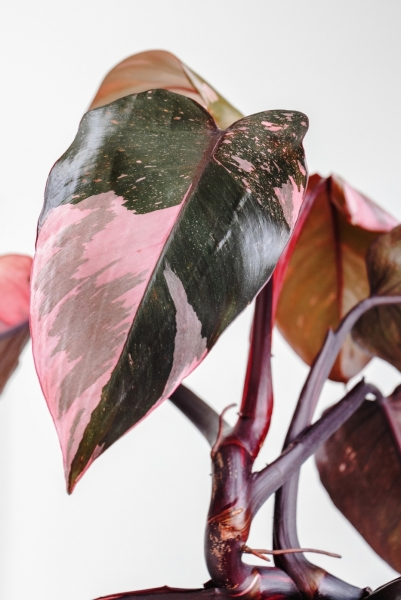
Watering
Watering is another crucial factor in keeping your Pink Princess plant healthy. Overwatering can cause root rot, while underwatering can cause the leaves to turn yellow and fall off. As a general rule, water your Pink Princess when the top inch of soil feels dry. Be sure to water the soil and not the leaves, as wet leaves can lead to disease. It's also a good idea to use room-temperature water to avoid shocking the plant's roots.
Humidity
The Pink Princess plant is a tropical plant, which means it loves humidity. If the air in your home is dry, you may notice the leaves start to curl or brown at the tips. To combat this, you can place a humidifier near your plant or use a pebble tray. To make a pebble tray, place a layer of pebbles in a tray and fill it with water. Place your plant on top of the pebbles, making sure the water doesn't touch the bottom of the pot. As the water evaporates, it will create a humid environment for your Pink Princess.
Fertilizing
Fertilizing your Pink Princess plant can help it grow and stay healthy. Use a balanced, water-soluble fertilizer once a month during the growing season (spring and summer). Be sure to follow the instructions on the fertilizer packaging, as over-fertilizing can harm your plant.
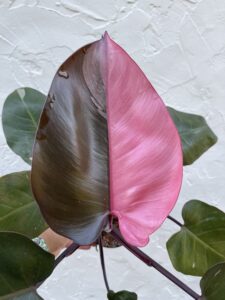
Pruning
Pruning your Pink Princess plant can help it maintain its shape and promote healthy growth. Use clean, sharp scissors or pruning shears to trim away any dead or yellowing leaves. You can also prune back any leggy stems to encourage bushier growth. Be sure to clean your tools with rubbing alcohol before and after pruning to prevent the spread of disease.
Propagation
If you want to expand your Pink Princess plant collection, propagation is an excellent option. The easiest way to propagate a Pink Princess plant is through stem cuttings. Cut a stem with at least two nodes (where the leaves grow from) and place it in a jar of water. Change the water every few days and keep the jar in a bright, indirect light location. After a few weeks, roots should begin to grow from the nodes, and you can transfer the cutting to soil.
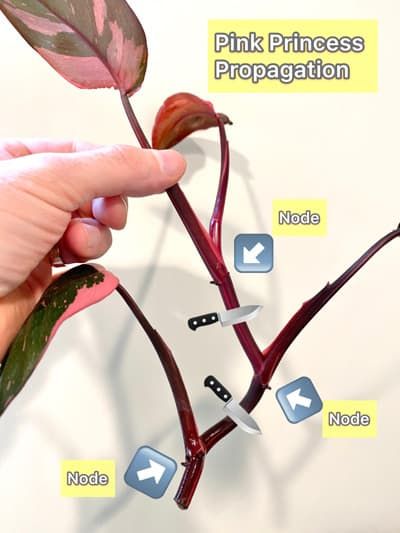
Pests and Diseases
Like all plants, the Pink Princess is susceptible to pests and diseases. Mealybugs and spider mites are common pests that can be controlled with insecticidal soap or neem oil. Fungal diseases can also affect your plant, especially if it's overwatered. To prevent fungal diseases, avoid getting water on the leaves and make sure the soil has good drainage.
In Conclusion
In conclusion, the Pink Princess plant is a beautiful and popular plant that can thrive with the right care. Be sure to provide your plant with bright, indirect light, proper watering, and humidity. Fertilize during the growing season, prune as needed, and watch out for pests and diseases. With a little bit of attention, your Pink Princess plant will continue to bring beauty and joy to your home for years to come.
We hope you found these tips helpful in keeping your Pink Princess plant happy and healthy. If you have any questions or tips of your own, feel free to share them in the comments below. And don't forget to share this article with your plant-loving friends who also have a Pink Princess plant!
